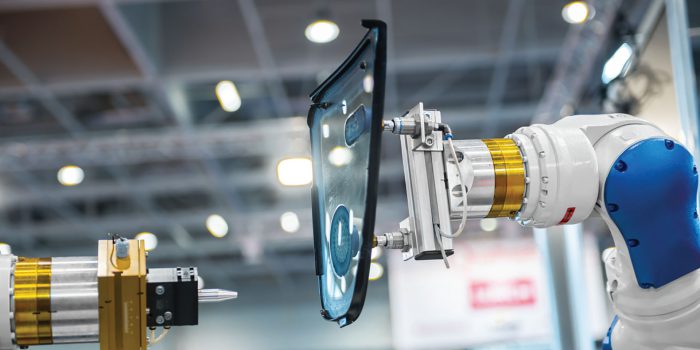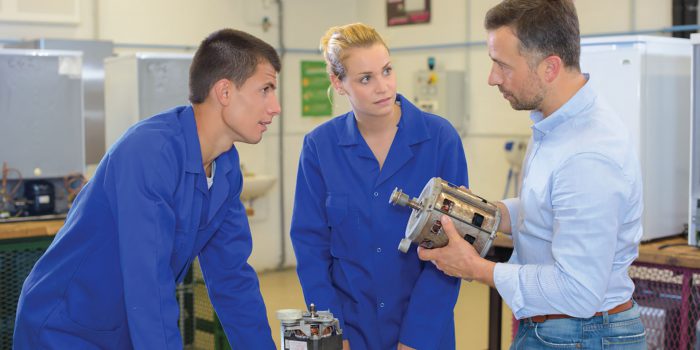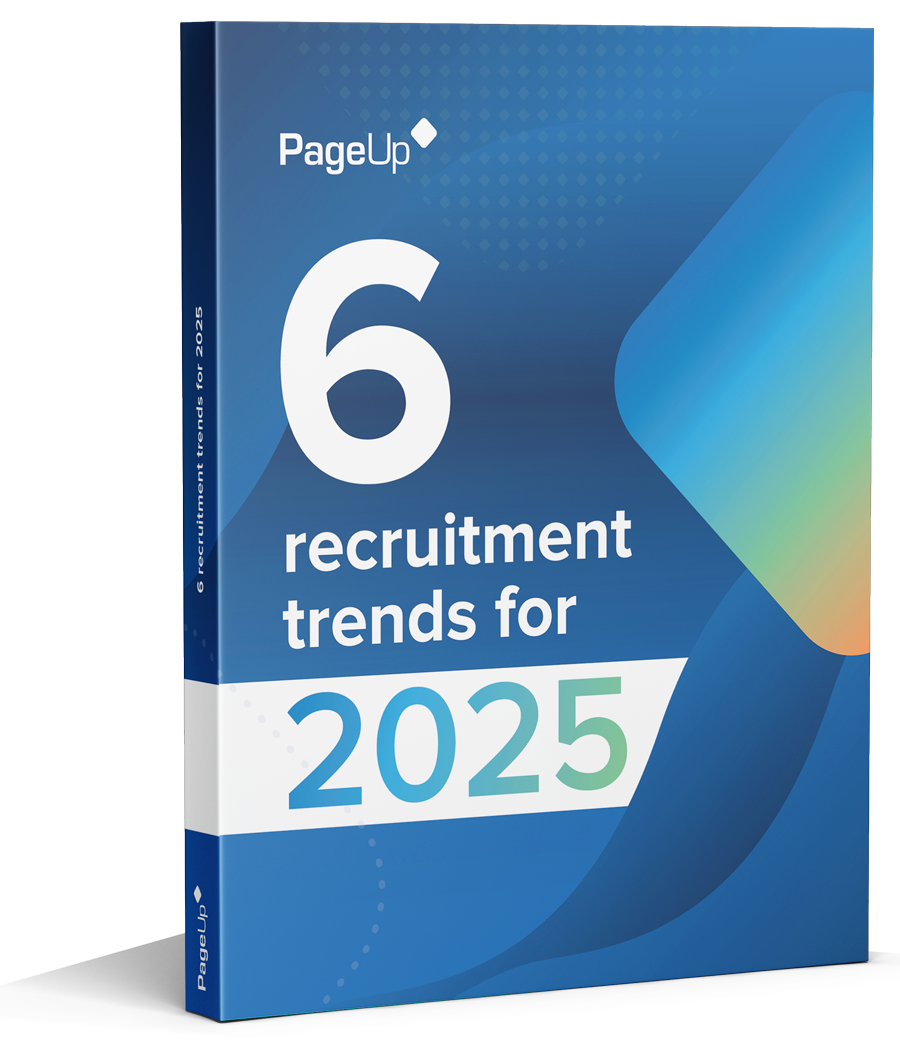In a world where robots, automation and gamification become the norm, how can a workforce adjust to be future-ready? For a start, by becoming more human. Here, we explore how technology is revolutionising the workplace.
In the movie, Back to the Future II (1985), Dr Emmett Brown (“Doc”), an eccentric inventor and scientist, briefly transports protagonist Marty McFly to 21 October 2015. McFly, a curious teenager, gets a glimpse into the future and sees technology that is now taken for granted. Today biometric recognition and smartpay are both incorporated into the Apple iPhone, while high-tech glasses that the movie characters use to watch TV look surprisingly similar to Google Glass and Oculus Rift. What was once considered futuristic is now our reality. As technology augments our lives and simplifies processes, we need to consider how these advances impact our jobs and the workplace.

Impact on the Worker
Work, as we know it, will continue to shift towards increasing task automation. McKinsey & Company research published in 2016 shows that after researching 800 jobs in the United States and studying 2,000 tasks for all occupations, current technologies could automate 45% of the activities people are paid to perform. They estimate that about 60% of all occupations could see up to 30% of their constituent activities automated. However, McKinsey’s research also finds that fewer than 5% of occupations can be fully automated by current technologies. This means that leaders need to analyse their team’s tasks to identify what is likely to be automated and how this will change workers’ engagement with their jobs and companies.
Both high-paid occupations as well as lower-wage occupations will be impacted. “We estimate that activities consuming more than 20% of a CEO’s working time could be automated. Conversely, there are many lower-wage occupations such as home health aides, landscapers and maintenance workers, where only a small percentage of their work can be automated with readily available technologies,” explains Oliver Tonby, Managing Partner, Southeast Asia at McKinsey.
As robots grow ever more skilled at mimicking human tasks, the human touch will become increasingly valued. Automation of work tasks also means that some workers cycle through positions faster. “We anticipate the rise of rollercoaster career paths. As technological changes and industrial restructuring proceed at a faster pace, skills and job categories become obsolete and force more workers to undergo retraining and mid-career job changes,” explains Tan Gan Hup, Associate Director (SMU-X), Singapore Management University.
Should we be wary of these changes or is there an opportunity to harness these advances and use them to the advantage of the company? Is it time to slip on the virtual reality (VR) goggles, and revisit organisationalorganizational culture?

The Company’s Responsibility
Just as individuals need to anticipate the future, companies must also look at their current talent and predict future gaps. What rote or time consuming tasks will be automated in the next five years? Or in the next 10 years? HR leaders need to look forward and work with business to predict future needs. “Leaders from the C-suite to the front line will need to redefine jobs and entire business processes so that their organisationsorganizations can take advantage of automation potential. The opportunities exist far beyond labour savings. The benefits typically are between 3 to 10 times the cost, and the magnitude suggests that the ability to staff, manage and lead increasingly automated organisationsorganizations will become an important competitive differentiator,” explains Tonby.
Here are three ways that leaders can get their companies ahead of the talent curve by acting on tomorrow, today.

1. Understand the future of work
“Many employers are taking advantage of new technologies (such as big data analysis) to help develop far more targeted training programs,” explains Fraser Thompson, Director, AlphaBeta, a strategy advisory business. Why do people join companies? Millennials, for example, sign up where they feel they share similar values. Millennials, more so than Baby Boomers and Gen Xers, look for companies that provide opportunities to learn and grow. Since employees no longer join companies for life, companies must look to attract and retain through their professional development. And with the use of big data analysis, HR can discover how to raise engagement; discover what motivates, deters and inspires employees; and use data to develop and accurately measure key performance indicators (KPIs).

2. Do what you can do with your existing talent pool
Look at your employees’ skill sets and what their current tasks are. Identify what will likely not exist in the next two to five years. How can you help to upskill and re-skill your current team? What can you move around to help them cope with future tasks? For example, today people are trained in how to operate a forklift. But in the near future, that same employee will likely need to know how to operate the robot that will control the forklift. “Rather than destroy jobs, technology can be expected to instead change roles, allowing workers to focus on other key areas of their work,” states a recent report from Hays Journal.
An example is self-service checkout lines in supermarkets and algorithms that can search documents for specific information. How can you begin to transition your team so that they use more technology or automation?

3. Bring in fresh talent, smartly
What stretch assignments can be assigned that will better align your team with their future plans, interests and prospects? How can this be done in a way that matches their personal aspirations?
How can your company better use metrics to predict performance? Let’s take Tata Consultancy Services (TCS) as an example. TCS employs over 362,000 professionals and in the financial year 2016, hired 90,000 new employees. One way they simplified hiring was to adopt a gamified system called Campus Commune, in which they engaged with students from their first day at university. For example, training modules and coding or design challenges help evaluate potential bright sparks among users. Over three to four years, the digital footprint yields a clear picture of likes, abilities, interests and existing competencies.
How can you implement something like this? One way is to track employees’ digital footprint from day one. Include psychometric assessments and personality tests — both personal and professional — and their feedback. Also, work towards using gamification for upskilling and as a fun alternative to e-learning for policies and HR.

Embracing the Future
Rather than fear the future and how automation may change work, this should be looked at as an opportunity. Just think of the time-intensive and repetitive tasks that could be automated: lawyers will spend less time in prep work, hospital staff will speed up administrative tasks like patient paperwork and HR professionals will onboard new employees in far less time. The advances in technology could mean more energy dedicated to creative tasks, critical thinking and to improving humankind itself. It’s the responsibility of employees to prepare for the future. While what that will look like remains uncertain, developing the skills mentioned above will prepare us for our VUCA world.
In the surrealist novel Invisible Monsters by American author Chuck Palahniuk, he posits, “When did the future switch from being a promise to being a threat?” The novel is a tale of a former model who reinvents herself after an accident. The unnamed protagonist deals with the realisationrealization that her future won’t be what she always thought. Palahniuk is onto something — what if we seek opportunities and look for promises of the advantages the future will bring? In the process, how will we respond if we get blindsided by abrupt shocks?
In many ways, the future is what we make of it. If we approach it as a time of great opportunity, and choose to continually bounce forward despite temporary setbacks, it might just turn out a fulfilled promise. In other words, let’s look at the future with rose-tinted VR glasses — and power on.
This piece was written with insights taken from the PageUp publication, CLIFFHANGER – HR on the Precipice in the Future of Work which addresses the major factors impacting the current HR and business landscape. Modelled off the book, PageUp is conducting a one-day intensive workshop across multiple cities, entitled CLIFFHANGER BOOTCAMP, that will explore emerging business and HR challenges and develop practical strategies that delegates can use to navigate their careers and organisationsorganizations into the digital age. Find out more about CLIFFHANGER BOOTCAMP here.
Fresh insights for HR
Stay up to date with HR trends, tips and more when you sign up for our industry newsletter






